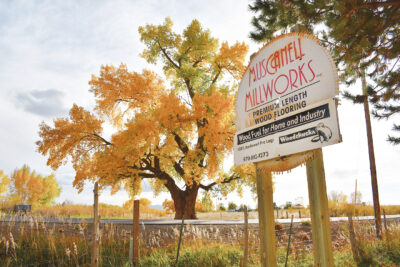With the July construction break behind us, business is slowly getting back to normal. Markets for most grade lumber items are weak, advised contacts, which is caused by the lackluster economy, and residential home construction is down. The economy is not strong presently, and uncertainty plays into the current pace of business.
Some wholesalers and secondary manufacturers have reduced their purchases of selected species.
Some companies are seeking more Ash logs, and green production of this species is moving well. Business for kiln-dried Ash is sufficient to absorb production. Demand from the Chinese market is performing better than other species, with prices being somewhat stable.
Hard Maple used for kitchen cabinets has seen competition over the past year, noted contacts, as has MDF and other engineered wood materials. Secondary manufacturers are reducing their purchases due to the slowdown in their markets, and sawmills have reduced their production of this species, but there is still more available than is being demanded.
Again, secondary manufacturers such as furniture, wood component and cabinet manufacturers are controlling their purchasing of Soft Maple. Moulding and millwork producers are still holding up their demand for this species, but this is a smaller market.
Cherry demand has lessened from Chinese markets and producers are working hard to find new customers elsewhere. Business is competitive for this species. Sales are made when prices are lowered, it is reported.
Flooring and cabinet manufacturers have eased their use of Hickory since the housing sector is in a downturn.
Demand for Oak continues to be competitive, and in many areas has not let up. In the flooring sector, Red Oak is gaining traction. It was noted that some plants were paying as much, if not more, for Red Oak than White Oak. Thus prices have risen slightly. Demand for this species on the domestic front is steady, while some say exports to the U.S. are flat. Some sales are being attained with Chinese buyers. Flooring manufacturers are stocking up on No. 2A and 3A Red Oak, and some are increasing their No. 1 Common purchases.
Supply of White Oak is limited note contacts, and so markets are lukewarm. Competition is strong and there is a limit of high quality White Oak logs getting to sawmills which is keeping prices for logs and green lumber up. Export demand is reported as mixed, and prices vary accordingly.
Poplar, a key species for the moulding and millwork manufacturers, is holding up better than most other grade markets. Supplies of this species was reported to have increased over the past couple of months, but prices have not been impacted.
Walnut did relatively well at the beginning of the year, with good business in the U.S., but to other export markets was weaker, and thus prices are somewhat lower.
According to Canada Mortgage and Housing Corporation (CMHC), the trend in housing starts has been declining steadily since November 2022. In May, the trend was 230,205 units, down 4.2 percent from 240,318 units in April.
The standalone monthly seasonally adjusted annual rate (SAAR) of total housing starts for all areas in Canada declined 23 percent in May (202,494 units) compared to April (261,357 units) according to CMHC.
The monthly SAAR of total urban starts (centers 10,000 population and over) declined 24 percent, with 182,842 units recorded in May. Multi-unit urban starts declined 30 percent to 139,890 units, while single-detached urban starts increased 6 percent to 42,952 units.
The Vancouver, Toronto, and Montreal CMAs (census metropolitan areas) all recorded declines in total SAAR housing starts in May, with Vancouver down 45 percent, Toronto down 28 percent, and Montreal down 35 percent.
All three recorded increases in single-detached starts that were offset by large decreases in multi-unit starts.
The rural starts monthly SAAR estimate was 19,652 units.
“We observed declines in both the SAAR and the trend of housing starts in May. The decline in housing starts is due to constraints in new construction, including labour shortages and higher construction and borrowing costs, which is considerably affecting multi-unit starts. Despite this, starts have only declined to the relatively high levels observed prior to 2020,” said Bob Dugan, CMHC’s Chief Economist.









